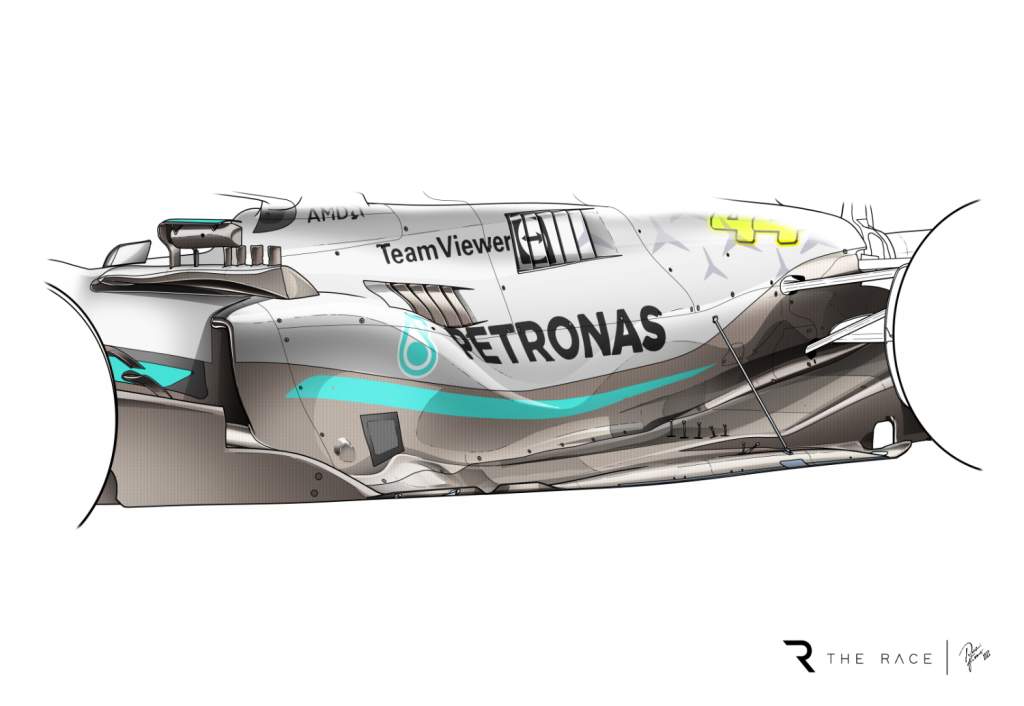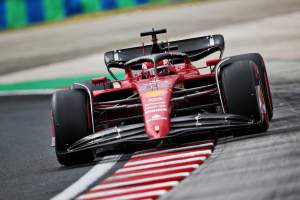Up Next

Mercedes has achieved its objective by complaining enough about driver safety concerns, and by visibly allowing its Formula 1 cars to ride the track surface extremely harshly, that the FIA has now stepped in.
As a result, the FIA has given the go-ahead to underfloor configuration changes with the aim of reducing the reliance on low ride heights for improved performance. In addition to the floor edges being raised by 15mm, more stringent floor flexibility tests are being introduced and the diffuser throat is being raised.
Don’t get me wrong, I’m not criticising these changes. I actually suggested this to the FIA during a presentation to the technical press back in March when these cars first ran. But you must be careful not to throw the baby out with the bathwater, because when you are dealing with problems like porpoising that you can’t research in depth it’s always easy to make matters worse.
What’s more, there’s no guarantee that these changes won’t actually help Red Bull and Ferrari, and perhaps a few others, compared to Mercedes. Then it would be a case of having had to be careful what you wish for.
Aerodynamic porpoising is one of the problems the FIA is trying to solve. This is when a small area of the underfloor or diffuser suffers airflow separation problems.
This can be generated by many things, but normally the closer a ground-effect car gets to the ground the more downforce it will produce and the greater the risk of porpoising. It was a problem during the last cycle of ground-effect cars and it will still be there when the next cycle comes along.
The answer to this is to recognise the problems and rectify them in your car design, which many of the teams have already achieved. By rectifying them, you will lose a little downforce but not as much as you will by simply raising the car.
Raising the rear ride height will cost downforce throughout the corner speed range. But if you develop the car to minimise the problems, you will be able to keep the high downforce levels at low and medium speeds, but not suffer from porpoising at high speed.
Mercedes has suffered most this year with its car, with three main problems.
1) It couldn’t generate the downforce from its sidepod and underfloor concept except when running at very low ride heights.
2) To run the car low, the car had to be run very stiff.
3) The car had relatively little suspension travel thanks to running low with most surface imperfections absorbed through the tyres. This meant there was no damping control, leading to the car hitting the ground uncontrollably.
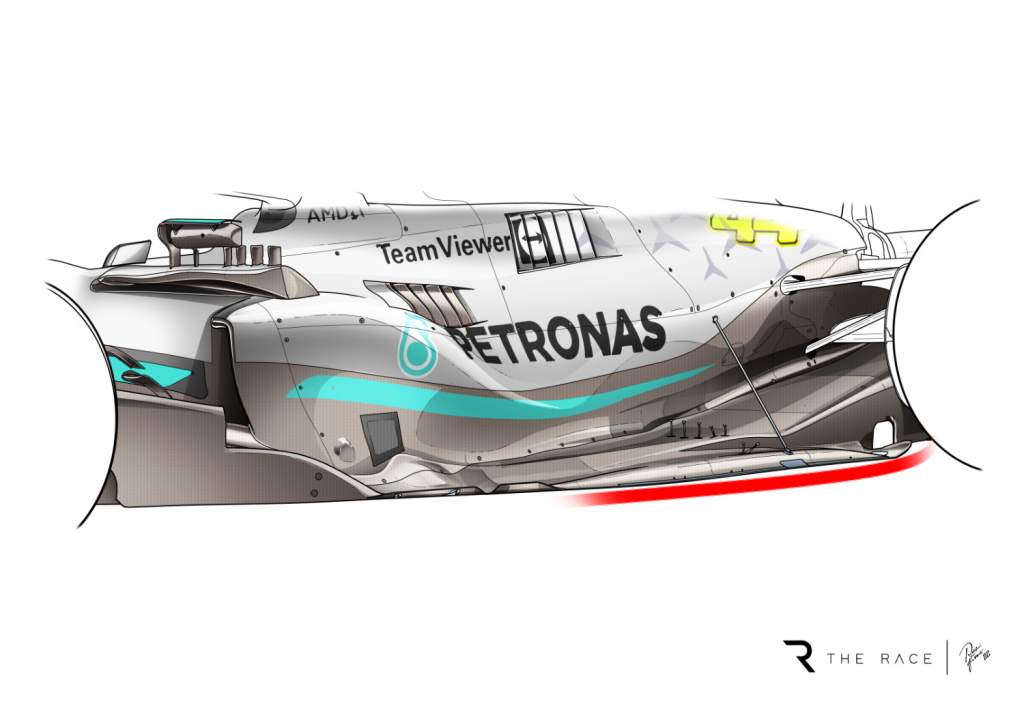
Ferrari had, and still has, controllable aerodynamic porpoising. You can see this clearly when the car is on track, but it’s relatively low frequency.
Red Bull doesn’t seem to suffer from this problem at all, but that is understandable when you have a look at the detail of its underfloor and diffuser surface and how that all interacts with the beam wing assembly.
Mercedes has never really tried to engineer its way out of this problem by adopting a similar approach to Ferrari and Red Bull.
Just look at the design of its floor edges by comparison, it’s very primitive.
Now that the FIA has finalised the Formula 1 floor rule changes for 2023, the teams know exactly what they are working towards with next year’s car.
There has been plenty of paddock politics surrounding this, but now it’s down for the design teams to get on with it.
Of the set of four proposals that have been approved, the one that has changed from the initial ideas was always the key one. This is the height of the floor edges, which were going to be raised to 25mm based on the original proposal. Now a compromise has been reached and it has been reduced to 15mm.

This is a sensible compromise, but you must be careful that it doesn’t tempt the teams to try to run their cars even lower.
The low pressure under the car, which is what generates the downforce, will always increase the more effectively you can seal the floor edges. With this change, the floor sealing technology will move towards using vortex generation to achieve the best results.
If I was as clever as the Red Bull technical group, I would have a big smile on my face. After all, they were the masters of this when running the high-rake cars of yesteryear. Yes, the regs are very different but the philosophy remains similar – you just have to create the mechanism to generate these vortices.
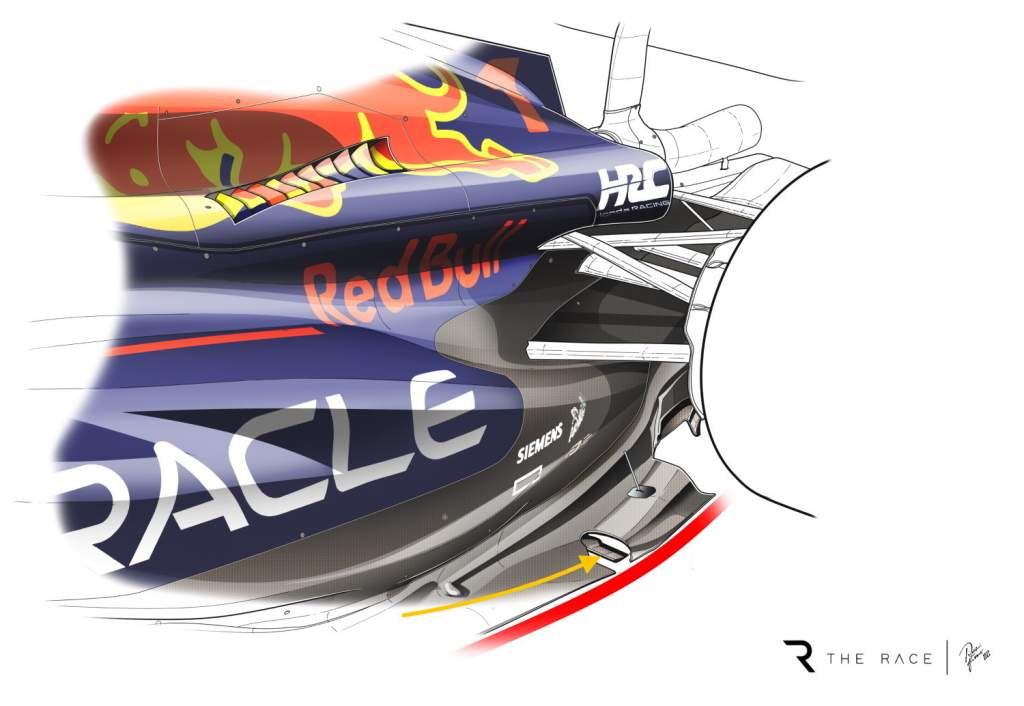
The key area is the floor edge towards the rear of the car. This is highlighted in red in our illustrations.
But Ferrari and Red Bull have both already raised their floors in this area, creating a tunnel with an inlet at the front connecting to the high-speed airflow that is being forced around the rear tyre contact patch, shown with the yellow arrow. This is all about improving control and consistency whilst still generating the high downforce levels by keeping the floor low.
You give up some of that aerodynamic load, but as Mercedes has shown you can have all sorts of problems if you chase high downforce figures to the exclusion of making things driveable.
That’s why Ferrari and Red Bull went the way they did. These raised sections act like a dimmer switch that prevents the underfloor from being overworked at high speed/low ride height and generating porpoising – and then on top of that generating enough movement to make the car hit the ground.
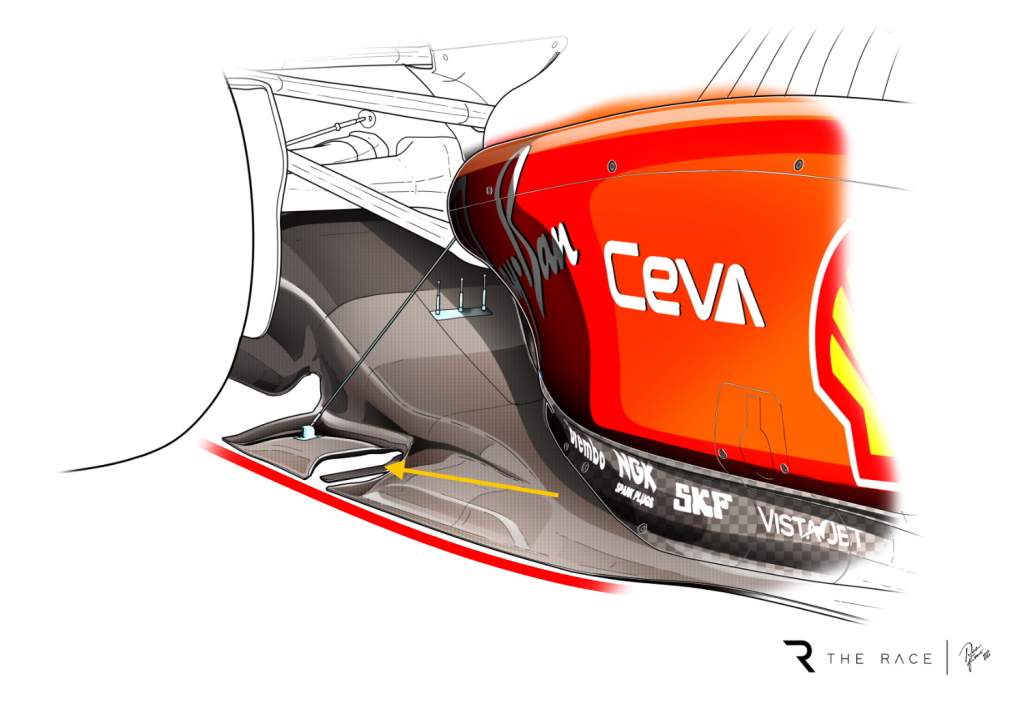
That means it’s all about creating a compromise where you can create the downforce without the problems, which is what the 15mm floor edge height now forces everyone to do.
This new regulation is a little different to the small tunnels highlighted in yellow on the Ferrari and Red Bull as it will mean the complete flat area as on the Mercedes will be raised by 15mm. This is the most sensitive area as it gets closest to the ground thanks to flexing.
But it will still be the lowest point, just 15mm higher and will still be potentially a problem next year even though more stringent floor flexibility tests are also being introduced.
It’s difficult to interpret exactly how the rules impose this, but the rear of the floor is where this has an effect. It’s here that the porpoising oscillation starts, so by ensuring the floor edges are raised, the chances of this being triggered are reduced.
Porpoising is distinct from bouncing, which is simply a car being very stiffly sprung and striking the ground due to a low ride height.
It will have an impact on performance, but in reality it’s the same for everyone. The teams that found the best solutions for 2022 will do the same for 2023.
The most important thing for the FIA to do is to monitor the frequency of the oscillations across a range of different chassis and determine if it is a potential long-term health problem for the drivers. This is something that the improved sensors planned for next year will help to do.
If one or two teams are running their cars in a condition that could generate long-term problems then the FIA needs to point out to them that it is their responsibility to supply their drivers with a safe car in all respects. This is what the vertical oscillation metric being introduced at Spa later this month is about.
Teams will need to increase their focus on suspension design. Red Bull has shown that increasing the anti-dive and anti-lift characteristics within the mechanical suspension geometry to well above anything I have ever seen in my time in F1 is possible without creating any problems. This allows its cars to be run softer vertically, but still retain a stable platform under braking.
The teams will complain bitterly that these changes have come too late to be incorporated into next year’s designs. But it’s their own fault as they could have agreed with the 25mm proposal when it was first suggested in July and got on with it.
I can also assure you that if they found a ‘whizzo’ design for part of the underfloor that means a change to the chassis, they would have no problem incorporating it.
Only time will tell if this is the correct solution. It is at least a token gesture in the correct direction, but as we have seen for many years the teams will find a way around it.
The FIA is aiming to solve the porpoising and bouncing problem for good with these changes. But we will see if in nine months or a year’s time it will all kick off again.


